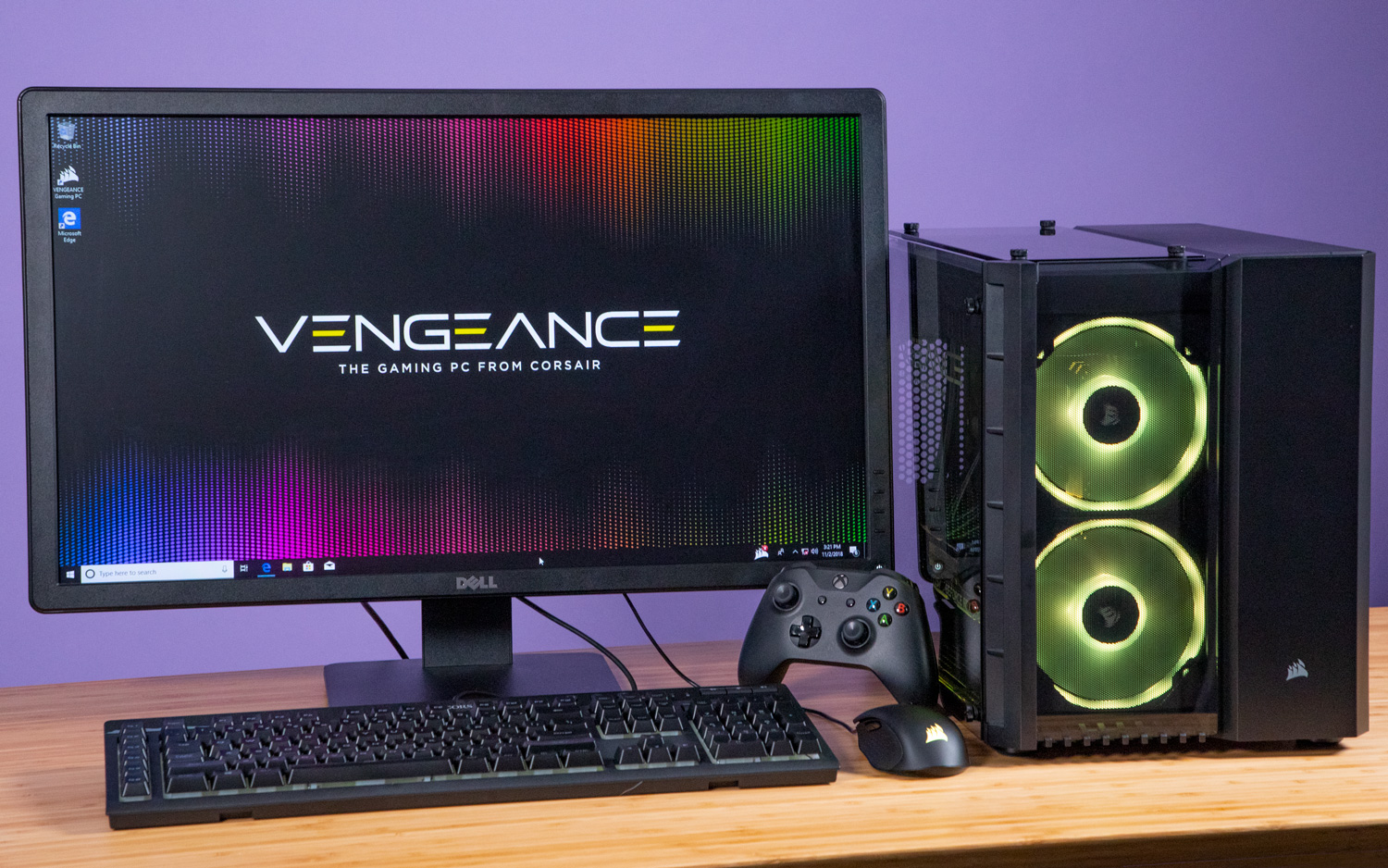Tom's Guide Verdict
The Corsair Vengeance packs strong gaming performance, awesome RGB lighting and solid upgradability into a beastly (but bulky) design.
Pros
- +
Awesome RGB lighting
- +
Strong overall performance
- +
Easy to upgrade
- +
Decent included peripherals
Cons
- -
Pricey
- -
No 9th Gen CPU
- -
Bulky design
Why you can trust Tom's Guide
Corsair entered the pre-built gaming PC space last year with the Corsair One, which was simple and subtle. The company’s second outing, the Vengeance Gaming PC ($2,399 as reviewed), is anything but. Corsair’s new desktop is an extravagant cube of tempered glass and aluminum stuffed with a dizzying array of attractive RGB lights, and some pretty powerful components in the form of an 8th Gen Core i7 processor and Nvidia RTX 2080 graphics. But while the Vengeance goes big both inside and out, its specs are a bit outdated compared to some competitors.
Design
The Corsair Vengeance isn’t the smallest or most elegant compact gaming PC I’ve laid my eyes on, but it sure is striking. The desktop looks like two PCs stitched together -- on one side, you have a tempered glass box loaded with glowy, RGB-backlit components, and on the other, a sleek black hunk of plastic that houses the key ports.
Overall, I’m a fan of the flashier half of the Vengeance’s design -- especially the pair of eye-catching backlit fans right up front -- though I wish Corsair could have found a way to slim down the PC a bit. The desktop’s luminous internals boast a whopping 95 lighting zones, which you can customize to your heart’s content using the system’s iCue software (more on that later).
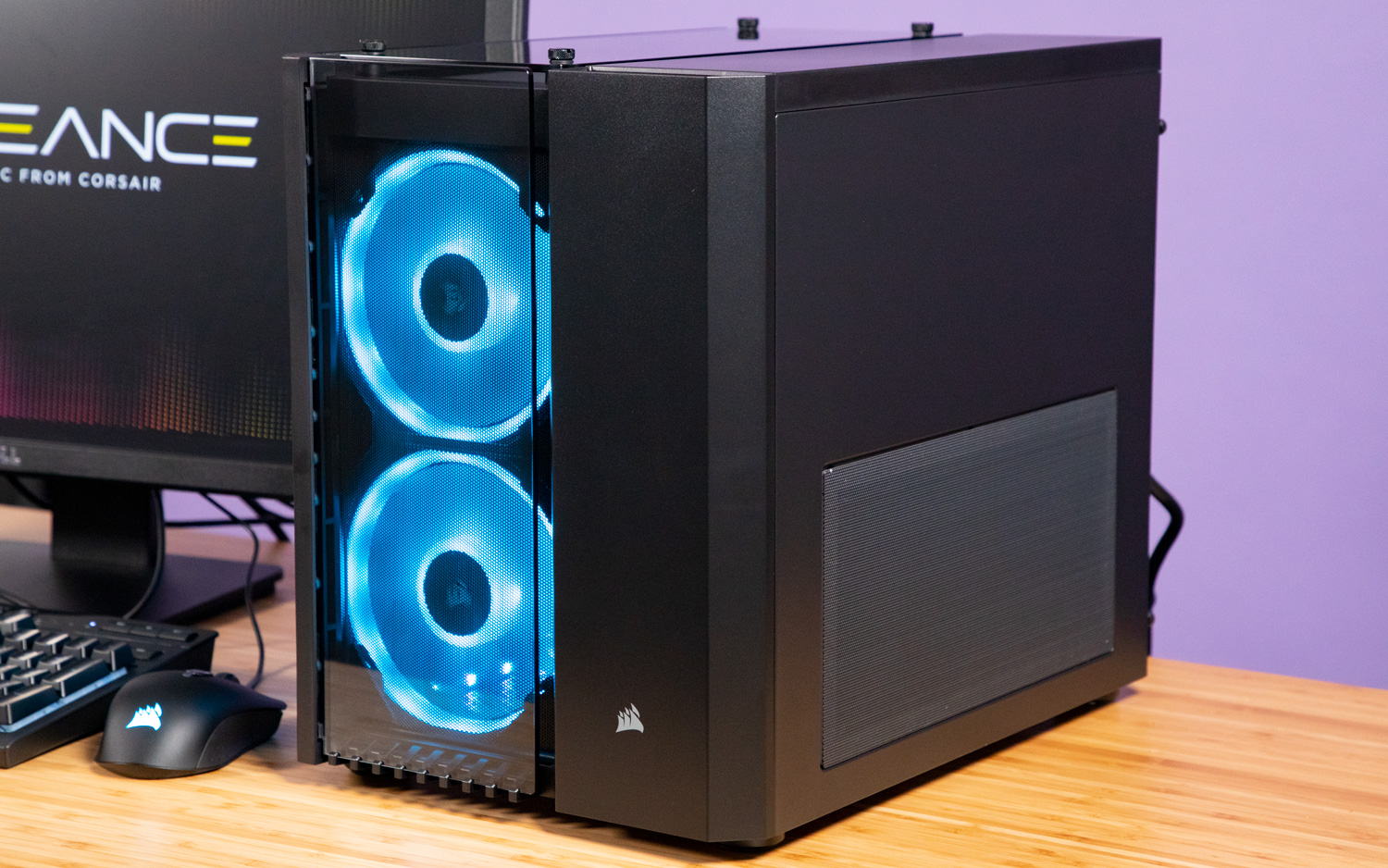
Measuring 15.7 x 10.9 x 13.8 inches, the Vengeance is shorter than the average tower, but also demands a good amount of horizontal space on your desk or floor (don’t expect to slide this thing into your entertainment center). MSI’s Trident X (15.6 x 15.1 x 5.1 inches) is taller but much thinner, while Lenovo’s Y730 Cube is smaller all around at 13 x 9.5 x 9 inches. I wish the Vengeance came with some sort of handle, because lugging this 29-pound beast around isn’t easy.
Key Specs
| Price | $2399 |
| CPU | Intel Core i7-8700, Liquid-cooled |
| RAM | 16GB |
| Storage | 480GB SSD, 2TB hard drive |
| GPU | Nvidia GeForce RTX 2080 |
| Accessories | Corsair K55 RGB Keyboard, Harpoon RGB Mouse |
Ports and Upgradability
The Vengeance covers all of the essentials when it comes to ports, offering two USB 3.1 ports and headphone and mic jacks right up front for your plug-and-play needs.
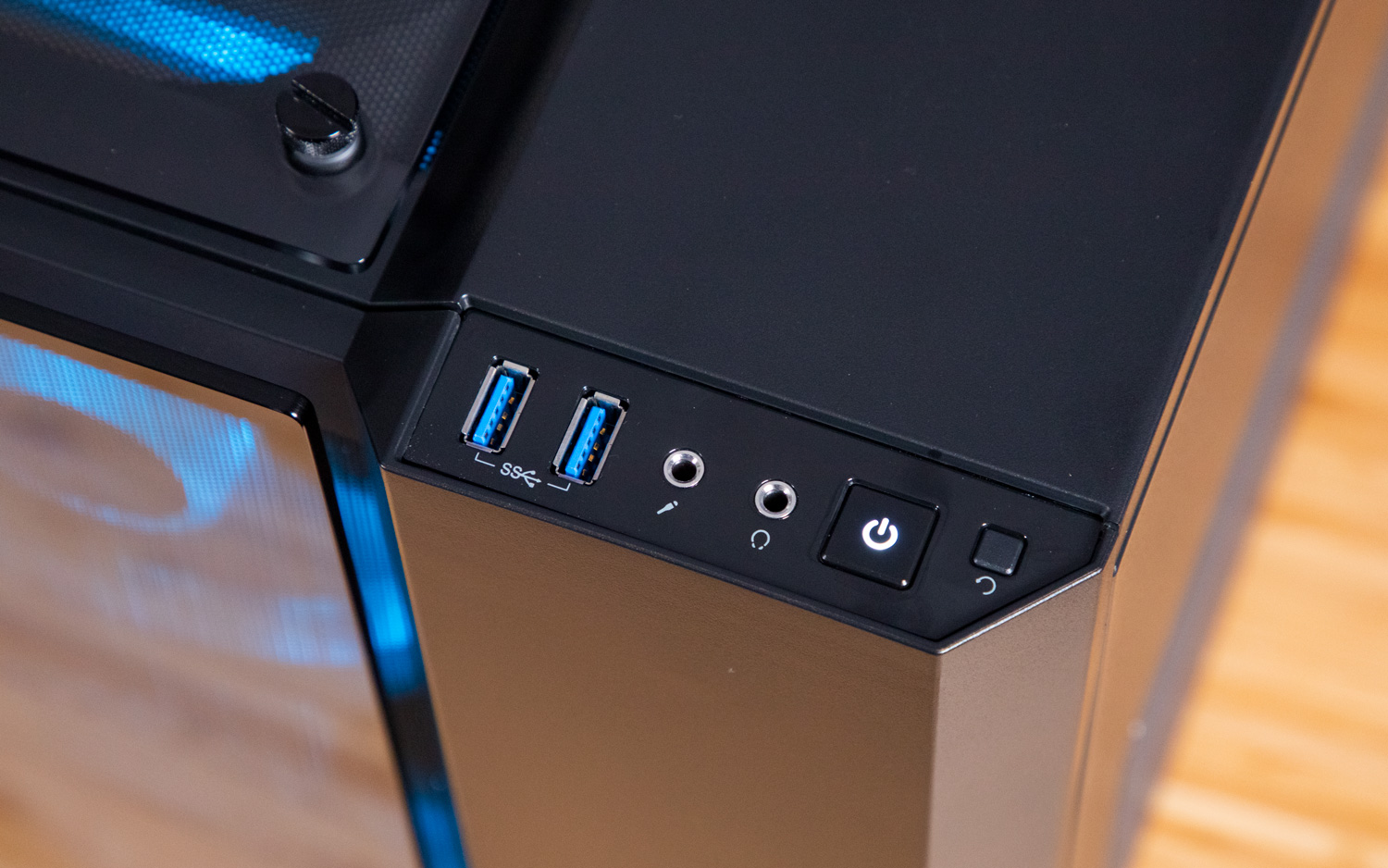
In the back, you’ll find a USB 3.1 Type-C port, a USB 3.1 Type-A, four USB 2.0 ports, an Ethernet jack, a PS/2 port for old school accessories and a full suite of audio ports for 7.1 surround sound.
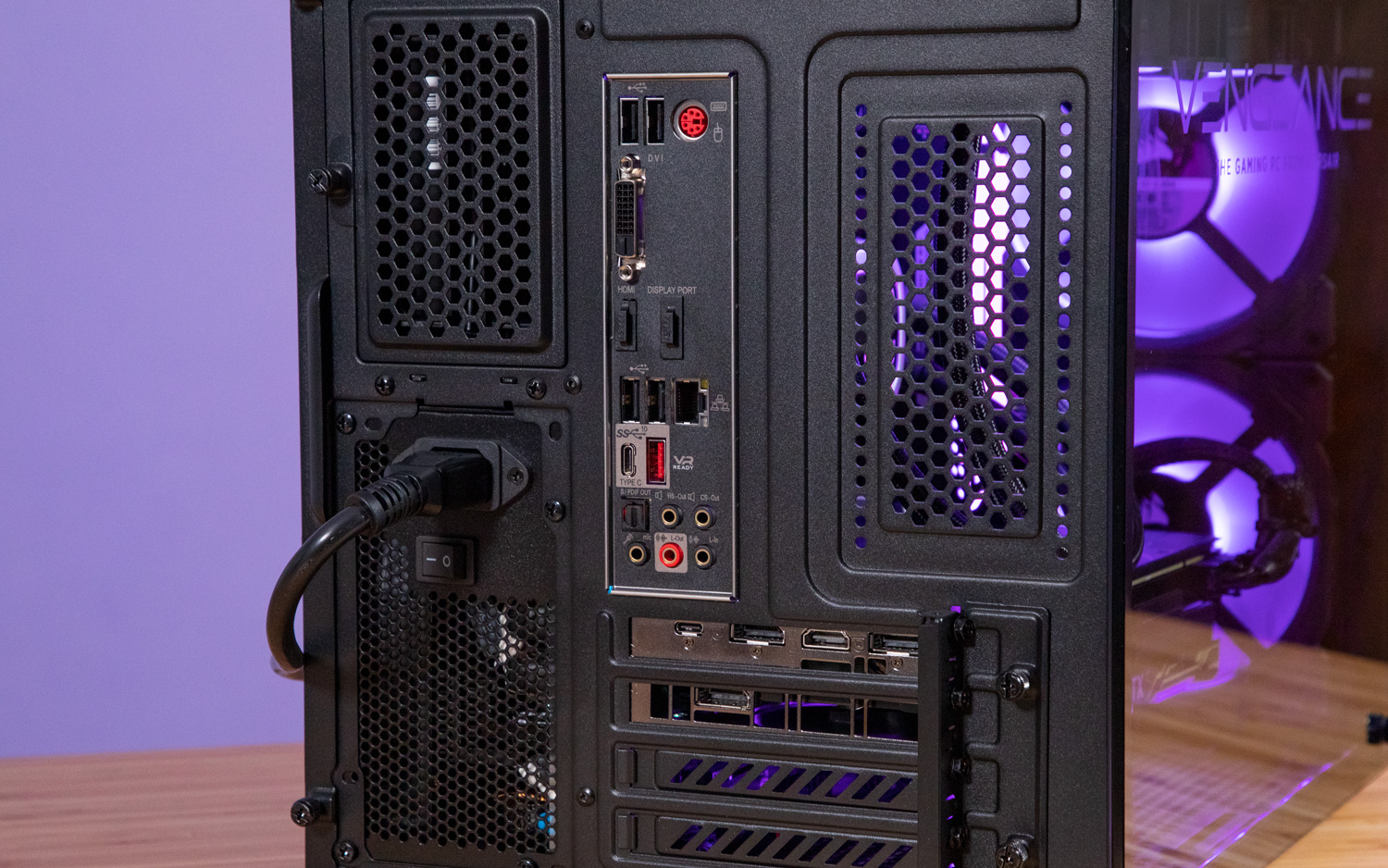
The system’s Nvidia RTX 2080 GPU packs three DisplayPorts and an HDMI port for all of your monitor needs.
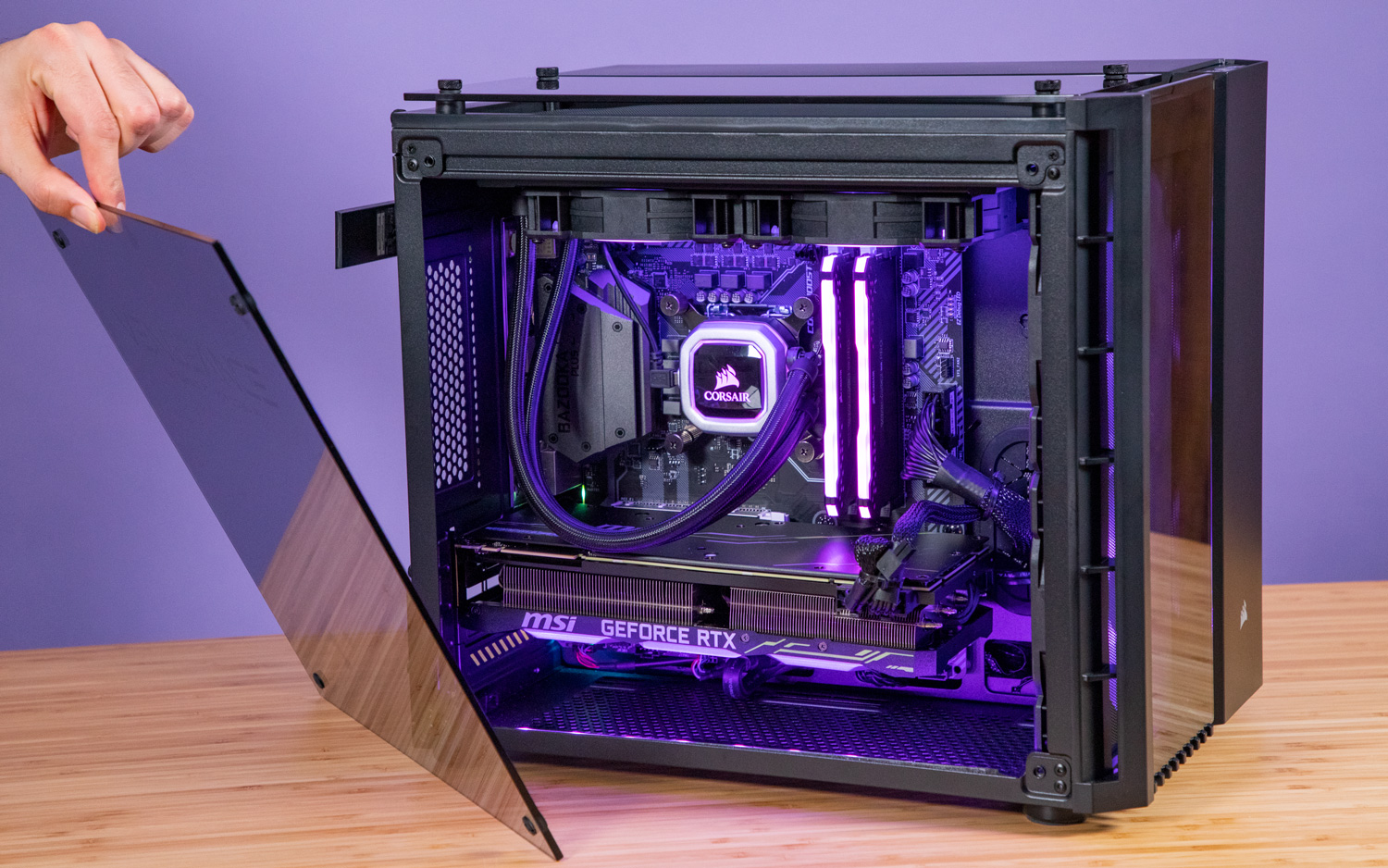
Corsair’s desktop is blissfully easy to get inside of. The system’s side-facing tempered glass panel is held together by four hand screws, which you can easily twist off to tinker with the GPU or RAM without the need for any tools. There’s also a removable glass panel up top, which you can pop off to remove and clean the vent above the system’s fans.
Gaming Performance
When testing Shadow of the Tomb Raider on the Vengeance’s Nvidia RTX 2080 graphics card at 4K with all settings cranked up, I marveled at the detail in the water as Lara navigated her way through a violent flood. Even more impressive was that the action ran at a smooth, close to 60 frames per second, and that the liquid-cooled Vengeance emitted little more than a low hum during the chaos.
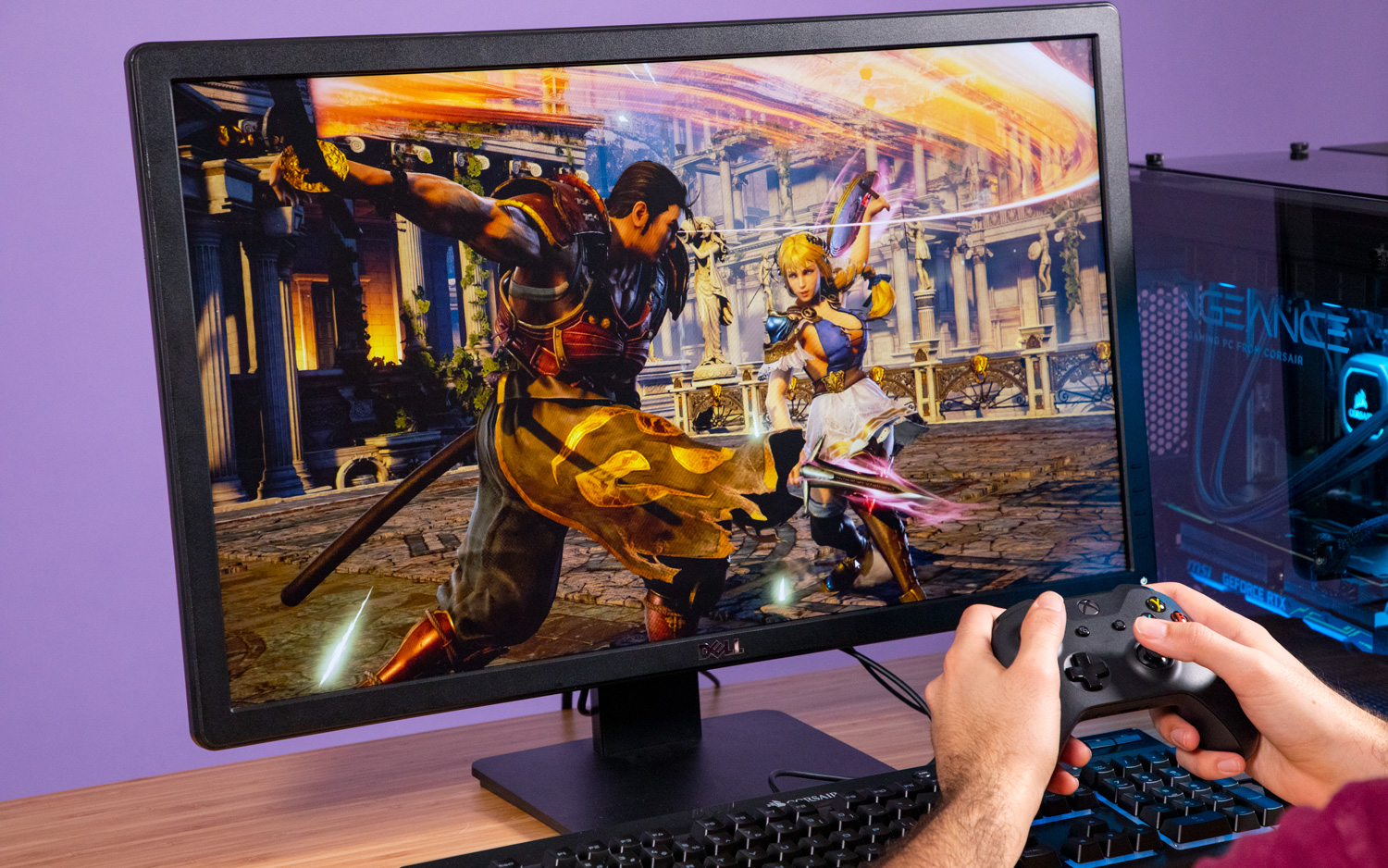
The Vengeance tore through our Rise of the Tomb Raider benchmark (1080p, max settings), turning in a blazing 91 fps. However, the system did falter to 28 fps at 4K. Other RTX 2080-powered machines performed similarly, with the ROG Strix GL12CX delivering 1080p and 4K scores of 81 and 27 fps, and the MSI Trident X hitting 91 and 30 fps.
The PC breezed through our max-settings Hitman benchmark, playing the stealth game at 136 fps at 1080p and 79 in 4K. The Strix (139/73) and Trident (143/78) both saw similar results.
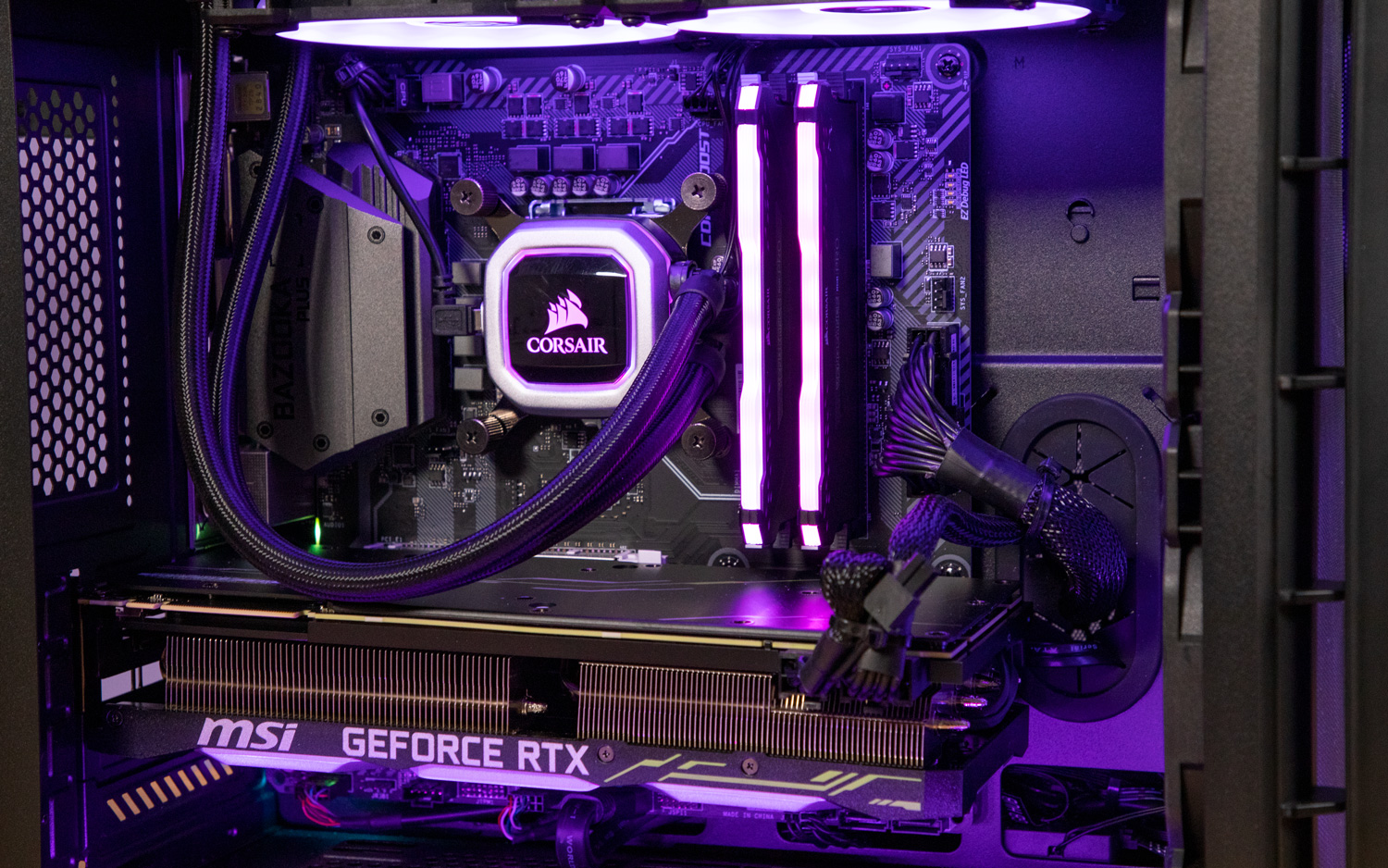
Corsair’s desktop scored a strong 6,308 on the Fire Strike Ultra test, which gauges 4K performance. That’s virtually identical to the Strix’s 6,342, and notably better than our 5,645 gaming PC average.
MORE: The Best PC Games to Play Right Now
Unsurprisingly, the Vengeance is more than ready for virtual reality, maxing out the SteamVR Performance Test with a perfect 11 and topping our 9.6 gaming desktop average.
Overall Performance
The Vengeance packs an 8th Gen Intel Core i7-8700 processor with 16GB RAM, and while I would have liked to have seen Intel’s new 9th Gen chips, the system still multitasked like a monster. I never saw a hint of slowdown, even as I played some Middle-earth: Shadow of War in 4K while simultaneously bouncing around three different Twitch streams in a separate window.
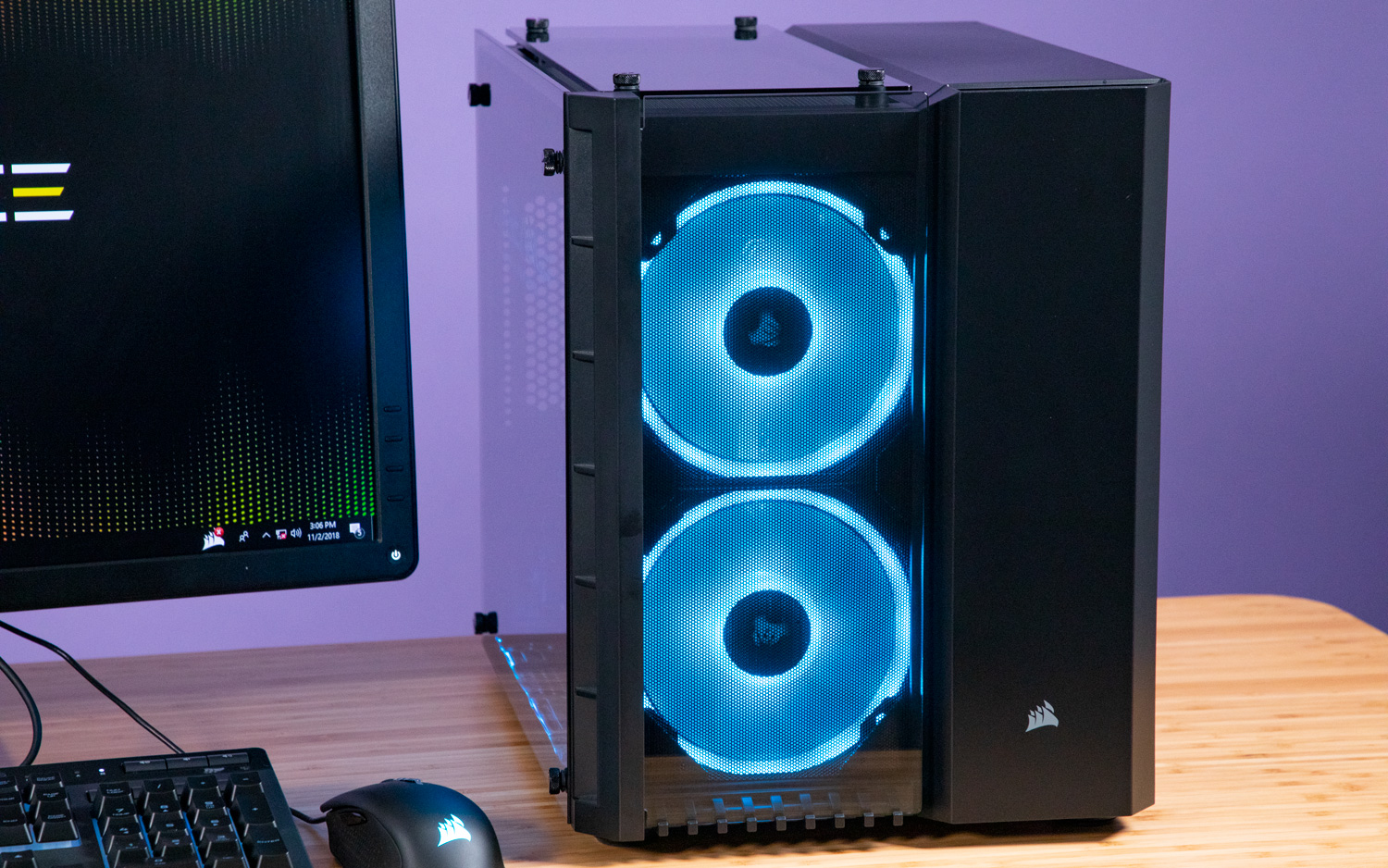
Corsair’s desktop scored a 24,000 on the Geekbench 4 overall performance test, trumping our 20,176 gaming PC average by a good margin while trailing Core i9 competitors such as the Trident X (31,581) and ROG Strix GL12CX (31,016).
The Vengeance’s 480GB SSD copied about 5GB of files in a zippy 12 seconds, for a transfer rate of 424 MB per second. That ties the Trident X’s 512GB SSD and tops our 370 MBps average, but doesn’t quite surpass the scorching 757 MBps that the ROG Strix’s 512GB SSD delivered.
Keyboard, Mouse and RGB Lighting
The Vengeance ships with Corsair’s K55 RGB Gaming Keyboard and Harpoon RGB Gaming Mouse, which normally sell for $49 and $29, respectively. They get the job done as far as out-of-box peripherals go, but you’ll probably want to at least treat yourself to a better keyboard if you can.
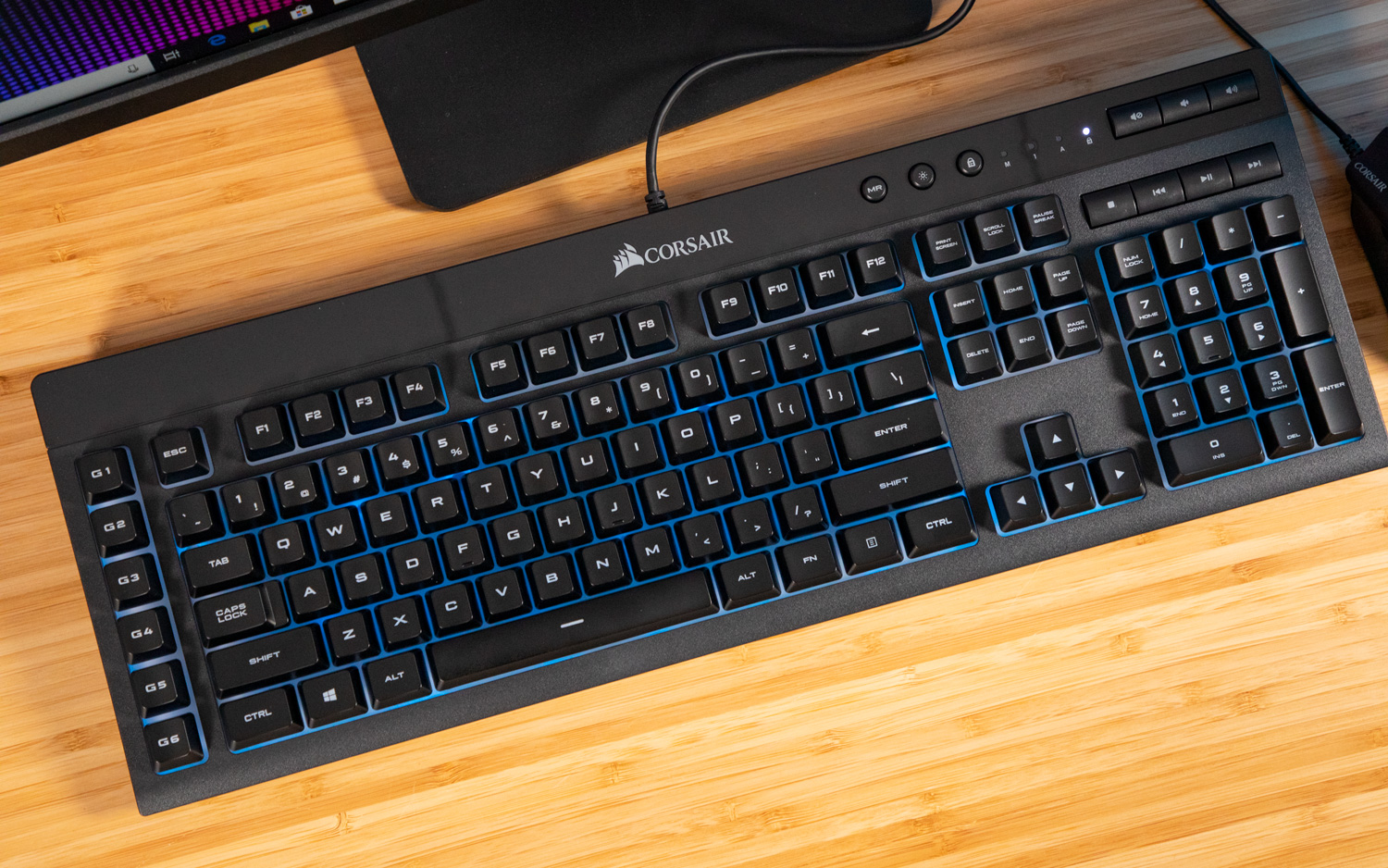
The K55 is a standard membrane keyboard, which felt really stiff and mushy coming off of my everyday mechanical set. The keyboard does have some nice features, though, including six programmable macro keys, discrete media controls, and a Windows key lock to prevent you from accidentally exiting your game.
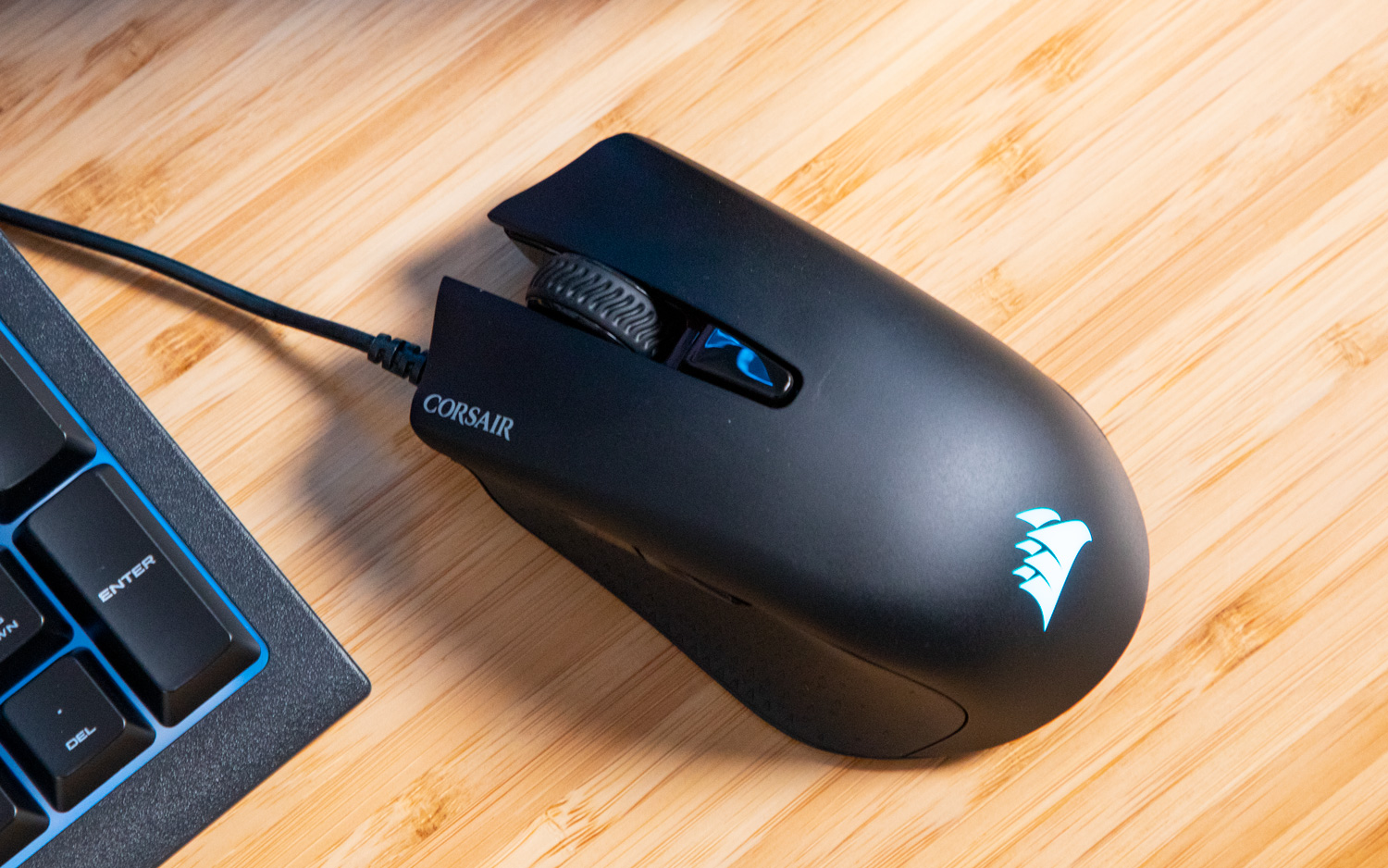
The Harpoon is a pretty basic entry-level gaming mouse, offering a total of six programmable buttons and a 6,000-DPI optical sensor. Between its curvy, ergonomic design and textured side grips, the Harpoon stayed comfortable to use for long stretches.
But what really makes these peripherals sing is the Vengeance’s included Corsair iCue software. This tool lets you program the RGB lighting on the PC, mouse and keyboard however you like, whether you want to have individual color profiles for each component or set them all to glow a single hue with a quick click.
MORE: Here Are the Best PC Game Controllers
Corsair’s options offers the usual slew of static and dynamic color options, allowing you to have your whole setup glow the entire rainbow or stay put with your favorite color. You can get as granular as programming individual effects for the motherboard and RGB RAM slots, though there’s also a handy Instant Lighting feature that lets you instantly sync up lighting options for every zone. You can also use iCue to toggle a variety of noise and cooling options while keeping an eye on your system’s temperature.
Configurations and Warranty
The Corsair Vengeance currently ships in a lone $2,399 configuration, which gets you a liquid-cooled Intel Core i7-8700 processor, 16GB of RAM, a 480GB SSD with a 2TB hard drive and Nvidia’s GeForce RTX 2080 graphics card. You also get about $80 worth of peripherals out of the box.
The Vengeance includes a two-year warranty, which covers any repairs that don’t involve you adding your own parts to the system.
Bottom Line
The Corsair Vengeance packs strong gaming performance and some of the best RGB lighting you can find on a gaming desktop into a striking and easy to upgrade chassis (even if it is a bit bulky). It even tosses in a decent mouse and keyboard combo, and makes it easy to sync up your lighting across the whole setup.
However, while the Vengeance’s $2,399 price tag is reasonable for the specs, you can get even sleeker and more powerful machines within the same price range. For just $100 more, you can get a $2,499 MSI Trident X configuration that packs a newer 9th Gen Core i9 processor into a slimmer and more versatile design.
Still, Corsair’s machine is flashier and easier to upgrade tool-free, making it a great pick for those who want a powerful premium gaming desktop that will fill their command center with every color of the rainbow.
Credit: Tom's Guide
Mike Andronico is Senior Writer at CNNUnderscored. He was formerly Managing Editor at Tom's Guide, where he wrote extensively on gaming, as well as running the show on the news front. When not at work, you can usually catch him playing Street Fighter, devouring Twitch streams and trying to convince people that Hawkeye is the best Avenger.
